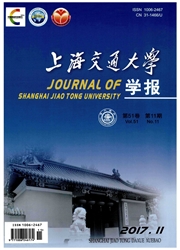

 中文摘要:
中文摘要:
通过对直缝槽、渐缩型和渐扩型缝槽的气膜冷却进行数值计算分析,获得了缝槽入口形状对气膜冷却性能的影响.首先采用基于k-w的剪应力输运湍流模型(SST)和雷诺应力输运模型(RSTM)对缝槽气膜冷却进行了计算,并与文献数据进行了比较,验证了在相同网格质量条件下SST湍流模型能更准确地模拟缝槽气膜冷却中的流动和传热特征.在此基础上,对具有45°喷射角和具有相同缝槽出口截面积的直缝槽、渐缩型和渐扩型缝槽在不同吹风比条件下的气膜冷却效率进行了比较.数值计算结果表明,缝槽的入口几何形状对气膜冷却性能有重要影响,直缝槽的气膜冷却性能优于渐缩缝槽和渐扩缝槽;根据吹风比M=4时二次流出口附近的温度场、流线图和湍流动能分布,探讨了渐缩缝槽和渐扩缝槽冷却效率降低的原因.最后给出了M=4时缝槽出口附近的静压扰动,从机理上阐述了二次流出口后部涡形成的原因.
 英文摘要:
英文摘要:
A numerical study was conducted to investigate the film cooling performance of a straight slot, a converging slot and a diffuser slot. Firstly, a shear stress transport (SST) k--w model and a Reynolds stress turbulence model (RSTM) were respectively used to calculate the slot film cooling, and the calcula- tion results were compared with the existing literature data. The comparison indicates that for the same mesh gird, the SST model shows a better performance in simulating the flow and heat transfer characteris- tics in the slot film cooling. Based on the validated model, the film cooling effectiveness of the different kinds of slot with the same jet angle (45~) as well as the same exit geometry at different blowing ratios was obtained. The results show the slot geometry plays an important role in the film cooling performance, and the straight slot has the best film cooling performance than the other two slots. The temperature field, streamline traces and the turbulent kinetic energy field around the film cooling slots at M = 4 are also ob- tained to analyze the underlying mechanisms of the slot geometry influencing the film cooling performance.
 同期刊论文项目
同期刊论文项目
 同项目期刊论文
同项目期刊论文
 Effect of coating thickness on the calibration and measurement uncertainty of a wide-band liquid cry
Effect of coating thickness on the calibration and measurement uncertainty of a wide-band liquid cry Transitional Flow and Heat Transfer Characteristics in a Rectangular Duct with Stagger-arrayed Short
Transitional Flow and Heat Transfer Characteristics in a Rectangular Duct with Stagger-arrayed Short A numerical study of the flow and heat transfer in the pin fin-dimple channels with various dimple d
A numerical study of the flow and heat transfer in the pin fin-dimple channels with various dimple d 期刊信息
期刊信息
